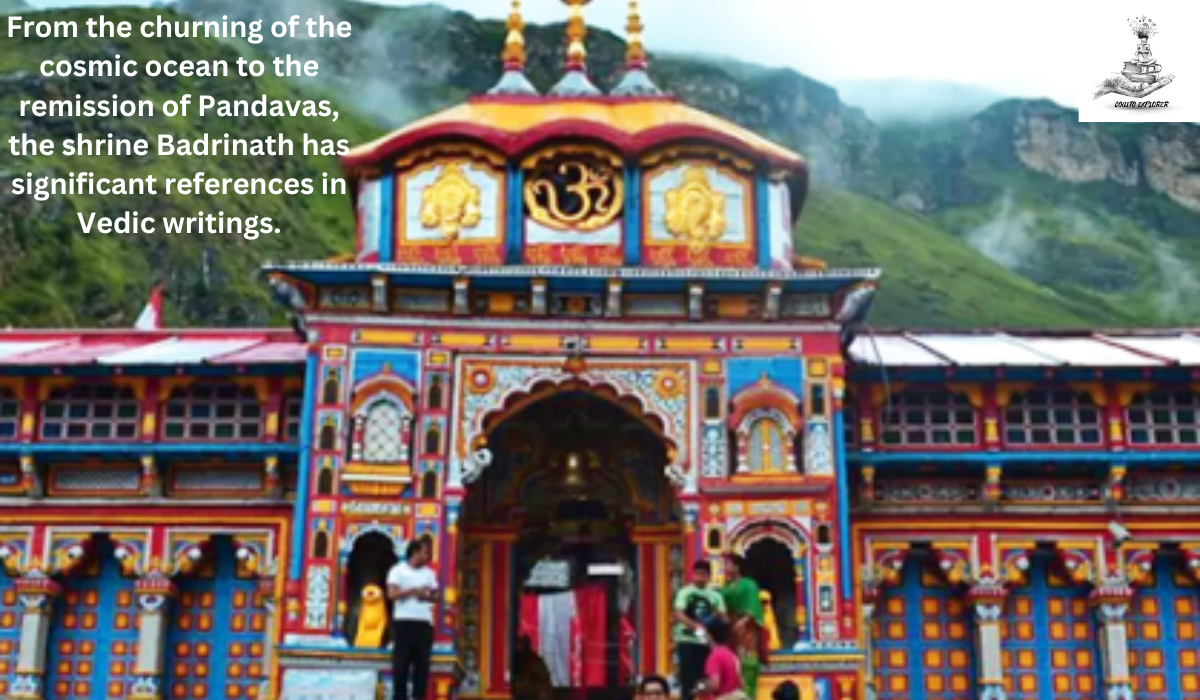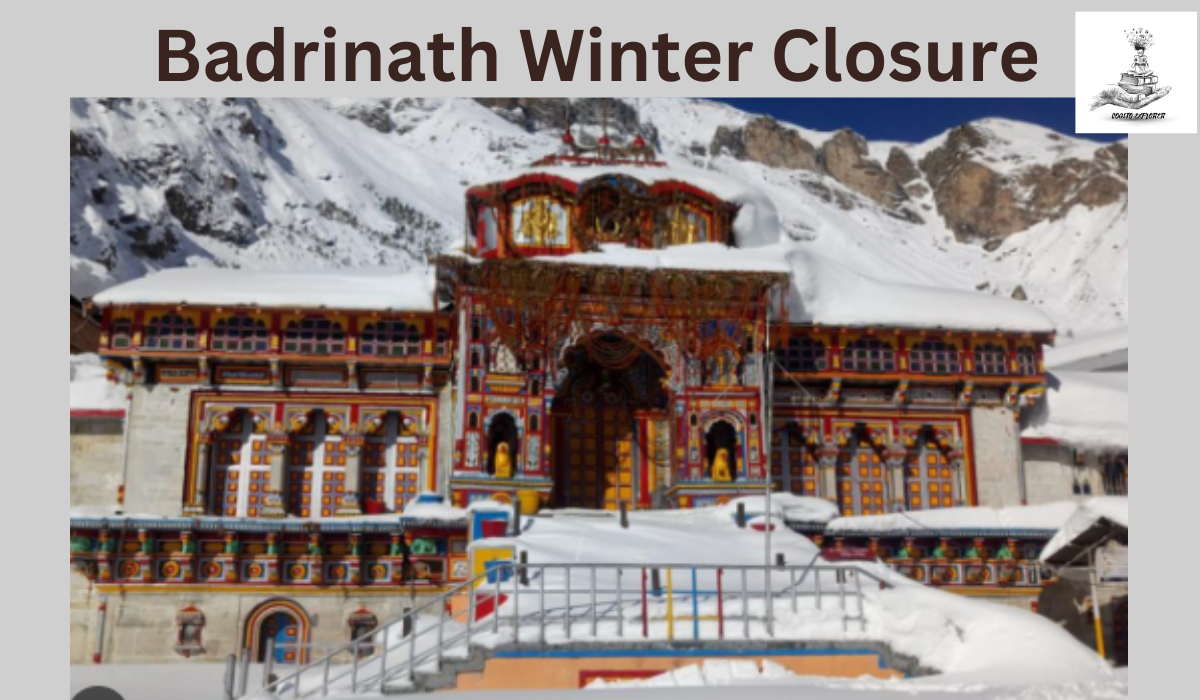Badrinath: Weather, Timing, Hotels & How To Reach Badrinath
Badrinath has been a significant pilgrimage destination for Devotees, particularly as one of the Char Dham sites, which also include Yamunotri, Gangotri, and Kedarnath [Chote char dham] in Chamoli district of Uttarakhand. The current temple is believed to have been built in the 9th century by Adi Shankaracharya. However, the temple has undergone several renovations and reconstructions over the centuries, with the present structure dating back to the 16th century.

The Legends And Folklore
There was a temple dedicated to the deity Badrinath many years ago as referenced in the Vedic writings. According to Hindu tradition, during the churning of the cosmic ocean (Samudra Manthan), Lord Vishnu assumed the form of Badrinarayan and performed penance at Badrinath in the Himalayas. The place is related to the Mahabharata war also. It is believed that after the Kurukshetra war, the Pandavas undertook a journey to seek forgiveness from Lord Vishnu for their sins. Lord Vishnu, in the form of Badrinarayan, decided to meet them at Badrinath.
The Resurrection And Renovations
Due to the growth of Buddhism, some believe the temple may have served as a Buddhist shrine during Ashoka’s rule. It remained Buddhist protection until the eighth century when Adi Shankara restored it and transformed it into a Hindu temple. One tradition has it that Adi Shankara found the divinity Badrinath in the Alaknanda River, enshrined it in a cave close to the Tapt Kund hot springs, and drove out the Buddhists. The Parmar lords acquired control of the temple, and their ancestors governed it, paying for its costs with income from villages along the Pilgrimage path.
The throne of Badrinath was named after the deity, and followers paid the king ritual deference. This tradition lasted until the late nineteenth century. The idol was transferred to its current location by the King of Garhwal in the sixteenth century. Even under British administration, the monarch of Garhwal remained in charge of the management committee.
The temple has undergone multiple renovations due to age and decline, including a large one in the 17th century by the Garhwal Kings. After the 1803 Garhwal earthquake, the King of Jaipur repaired it. Renovations continued throughout the early twentieth century. The temple received cash from rents owed by multiple villages, and the number of visitors grew during the Kumbh Mela festival, which occurs every twelve years.
Religious Festivals Of Badrinath
The main festival at Temple is called Mata Murti Ka Mela, celebrating the Ganges river descending to Earth. They honor the mother of Badrinath during this festival, who is believed to have split the river into twelve channels for the benefit of people. The river’s source became the hallowed ground of Badrinath.
In June, both Badrinath and Kedarnath temples celebrate the Badri Kedar festival for eight days. Artists from all over the country perform during this time.
Every morning, important religious activities like mahabhishek (ablution), abhishek, gitapath, and bhagavat puja are performed. In the evening, rituals like geet govinda and aarti take place. Recitals of Vedic scripts like Ashtotram and Sahasranama are part of the rituals. After the evening aarti, decorations are removed from the Badrinath temple image, and sandalwood paste is applied. The paste is given to devotees the next day as prasad during the Nirmalaya darshan. All these rituals happen in front of the devotees, unlike some other temples where certain practices are hidden. The common prasad provided to devotees is sugar balls and dry leaves. Since May 2006, they also offered Panchamrit Prasad, locally prepared and packed in bamboo baskets.
Winter Closure
The temple closes for winter on the auspicious day of bhatridwityia in October–November. On the closing day, a lamp filled with ghee is lit to last for six months. Special pujas are performed in the presence of pilgrims and temple officials. During the winter, the Badrinath temple image is symbolically transferred to the Narasimha temple at Jyotirmath, 40 miles away. The temple reopens in April–May on Akshaya Tritiya, another auspicious day. Pilgrims gather on the first day to witness the Akhanda Jyothi.

The temple is a holy place where Hindus offer oblations to ancestors with the help of priests. Devotees visit to worship in front of the Badrinath image and take a holy dip in the Alaknanda River, believing it purifies the soul.
Best Time To Visit Badrinath
Some places are open all year round, inviting us to enjoy them in every season. Others are open only for a specific time, letting us see something amazing before closing up again. Badrinath, a small but stunning holy town in Uttarakhand, falls into the latter category.
The main attraction, the temple, closes during the cold winters. However, in the summer, it opens up and reveals its spectacular beauty – making it the best time to visit Badrinath. For most of the year, Badrinath is cold and snowy, with an average temperature of around 18 °C, which is generally comfortable. As Monsoon and Winter arrive, the temperatures drop, bringing rain and snow to the temple.
While your choices for visiting may be limited due to the weather, a trip to temple is highly recommended. It’s not just a part of the annual Char Dam festival. it’s also a town that radiates spirituality through its natural surroundings. Don’t let the high altitude take your breath away – it’s the beauty, peace, and natural wonders that will capture your heart, calm your soul, and delight your senses.
Badrinath Weather Overview
Summer (April – June):
- Avg. High: 29°C, Low: 19°C.
- Pleasant weather, clear skies.
- Ideal for Char Dham Yatra.
- Pack warm clothes for cold nights.
- Book tickets and hotels in advance.
Monsoon (July-September):
- Avg. High: 27°C, Low: 20°C.
- Cold and chilly, heavy rain (July-August).
- September opens for tourists.
- Risk of landslides, and occasional showers.
- Bring rain gear and warm clothing.
Winter (October-April):
- Avg. High: 25°C, Low: 6°C.
- Snow starts mid-October.
- In Extreme conditions, the temple is closed.
- Wait until April for reopening.
- Check Char Dham packages for Yatra.
Hotels near Badrinath Temple
Hari Om Hotel, Badrinath: The distance from Temple is 250m
- Car park
- Laundry service
- RestaurantsRoom service
- Family room
- Rental car
- Security [24-hour]
Jai Shri Badri Tourist Guest House: Distance from the Temple is 750m
- Car park
- Free Wi-Fi in all rooms!
- Front desk [24-hour]
- Room service
- Wi-Fi in public areas
- Family room
- Rental car
- Daily housekeeping
Hotel Shree Badri Valley, Badrinath: Distance from Temple is 770m
- Car park
- Restaurants
- Room service
- Rental car
- Security [24-hour]
- Daily housekeeping
- Smoke-free property
- First aid kit
Sapphire Valley: The distance from the temple is 230m
- Security [24-hour]
- Daily housekeeping
- Smoke-free property
Places near Badrinath Temple:
- Mana Village
- Valley of Flowers National Park
- Auli
- Hemkund Sahib
- Vasudhara Falls
- Joshimath
- Satopanth Lake
- Charanpaduka
- Vyas Gufa (Vyas Cave)
- Tapovan
- Bhavishya Badri
- Nanda Devi National Park
- Kalpeshwar
- Rudraprayag
- Narsingh Temple
How To Reach Badrinath
The temple is situated at the base of the Himalayas in Uttarakhand. You can get there by road from Dehradun and Delhi, which have domestic and international airports respectively.
How to reach Badrinath by Air
The closest domestic airport is Jolly Grant Airport in Dehradun, about 317 km away. If you’re coming from abroad, the nearest international airport is in New Delhi.
How to reach Badrinath by Train
The closest train stations to the temple are located in Kotadwar (327 km), Haridwar (324 km), and Rishikesh (297 km). There are extremely few trains in Kotadwar and no rapid trains connecting Rishikesh. For those travelling to Badrinath by train, Haridwar is the most convenient railway station. Numerous trains connect Haridwar to other parts of India.
How to reach Badrinath by Bus
It is easily accessible by road. It is situated 296 km from Rishikesh and 525 km from Delhi. Regular buses from Delhi, Haridwar, and Rishikesh arrive at Badrinath.
Regular buses leave well before morning from the bus station in Rishikesh and travel to Badrinath. Before daybreak, the last bus from Rishikesh departs for Badrinath. After Joshimath, the road becomes narrow, and it is off-limits after dusk. In order to catch the early morning bus for Badrinath from that town, one must travel only as far as Rudraprayag, Chamoli, or Joshimath if they miss the bus for Badrinath at the Rishikesh bus station..
Here’s a road distance chart to Badrinath from major cities:
- Delhi to Badrinath: 525 km
- Haridwar to Badrinath: 310 km
- Rishikesh to Badrinath: 297 km
- Dehradun to Badrinath: 337 km
- Agra to Badrinath: 795 km
- Jaipur to Badrinath: 836 km
- Mumbai to Badrinath: 1,777 km
Frequently Asked Questions
What is Badrinath Temple?
Located in the village of Badrinath in the Indian state of Uttarakhand, the Badrinath Temple is a Hindu temple devoted to Lord Vishnu.
Where is Badrinath Temple situated?
The Temple is situated in the town of Badrinath in the Chamoli district of Uttarakhand, India, in the Garhwal Himalayas.
How To Reach Badrinath Temple?
The temple is well-connected by road. The closest train station is at Rishikesh, while the closest airport is Jolly Grant Airport in Dehradun. From these points, one can hire a taxi or use state transport to reach the temple.
What is the best time to visit Temple?
The temple is open to devotees from late April to early November. The best time to visit is during the summer months (May to June) when the weather is pleasant.
Are there any accommodation facilities near the temple?
Yes, there are various accommodation options in Badrinath, ranging from budget to luxury hotels and guesthouses. Pilgrims can find suitable places to stay for their visit.
Are there any rituals or festivals celebrated at the Temple?
Several rituals are performed daily at the temple, and special festivals like Badri-Kedar Festival and Maha Shivaratri are celebrated with great fervor.
Is photography allowed inside the temple?
Photography is generally not allowed inside the temple. Devotees and visitors are expected to adhere to the rules and regulations set by the temple authorities.







